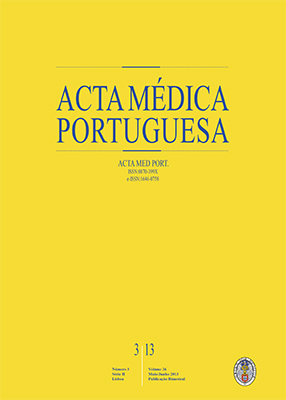The Anatomical Variations of the Extensor Muscles of the Hand Fingers
DOI:
https://doi.org/10.20344/amp.4258Abstract
Introduction: The extensor tendons of fingers are subject of many variations, some of them quite frequent.Material and Methods: The dissection of the posterior region of forearm and hand was carried out, and the anatomical variations were documented.
Results: In Case 1 the extensor digitorum divided into 5 tendons: one for the index finger, one for the middle finger, two for the ring finger and one for the little finger; the extensor indicis proprius divided into two tendons: one for the index and one for the middle finger. In Case 2 the extensor digitorum divided into 4 tendons: one tendon joined the extensor pollicis longus, one tendon for the index, one for the middle finger and one for the ring finger with one slip to the little finger; the extensor indicis proprius divided into two tendons, one for the index and one for the middle finger; the extensor digiti minimi divided into two slips for the little finger.
Discussion/Conclusions: The existence of a double tendon from extensor digitorum for the ring finger is described in several studies. The tendinous slip from extensor digitorum to extensor pollicis longus is not a frequent finding. The double tendon from extensor digiti minimi may occur in 60 to 90% of cases. The knowledge of the most common variations of the tendons of extensor muscles is very important in surgical practice.
Downloads
Downloads
Published
How to Cite
Issue
Section
License
All the articles published in the AMP are open access and comply with the requirements of funding agencies or academic institutions. The AMP is governed by the terms of the Creative Commons ‘Attribution – Non-Commercial Use - (CC-BY-NC)’ license, regarding the use by third parties.
It is the author’s responsibility to obtain approval for the reproduction of figures, tables, etc. from other publications.
Upon acceptance of an article for publication, the authors will be asked to complete the ICMJE “Copyright Liability and Copyright Sharing Statement “(http://www.actamedicaportuguesa.com/info/AMP-NormasPublicacao.pdf) and the “Declaration of Potential Conflicts of Interest” (http:// www.icmje.org/conflicts-of-interest). An e-mail will be sent to the corresponding author to acknowledge receipt of the manuscript.
After publication, the authors are authorised to make their articles available in repositories of their institutions of origin, as long as they always mention where they were published and according to the Creative Commons license.









